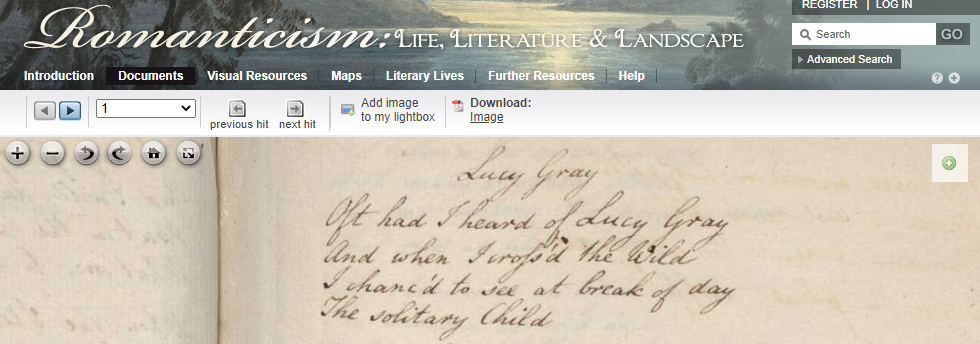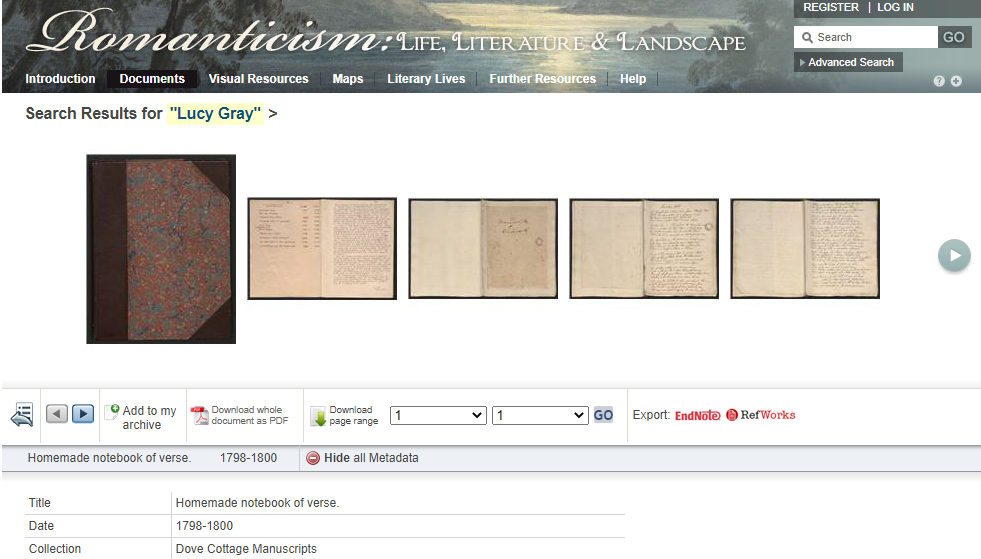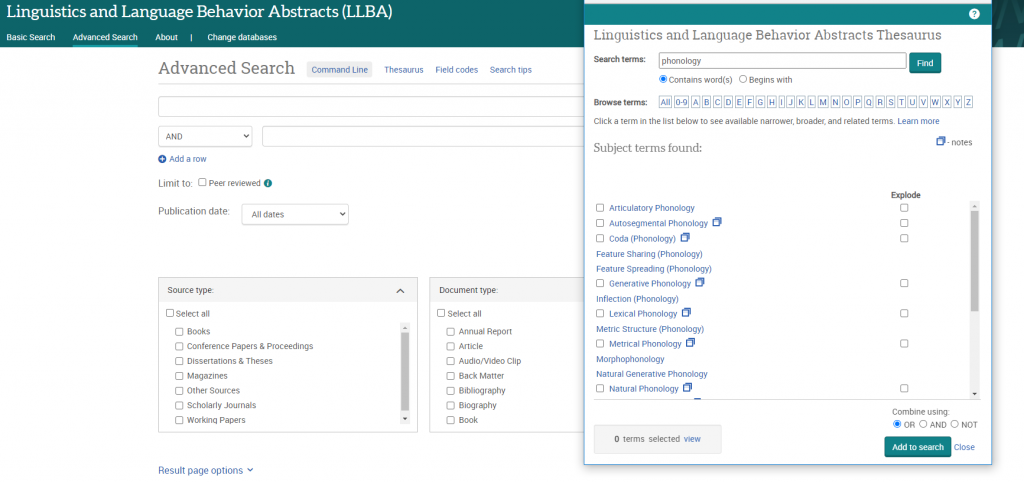Romanticism: Life, Literature and Landscape is a powerful digital resource, ideal for students and researchers interested in William Wordsworth and the Romantic period.

It provides unique access to the working notebooks, verse manuscripts and correspondence of William Wordsworth and his fellow writers, including Dorothy Wordsworth, Samuel Taylor Coleridge, Thomas De Quincey and Robert Southey. While also offering a fascinating insight into the wider social, political and natural environment that shaped much of Wordsworth’s work, through the addition of travel journals, legal and financial records, guidebooks and over 2500 pieces of fine art from the Wordsworth Trust. There’s even more to explore with secondary research materials, including essays, biographies, maps, and photographs of the Lake District.
You can choose to browse the database via the Documents and Visual Resources tabs on the menu or use basic / advanced searches to focus your results.
Documents
The Documents section allows you to browse materials by collection (e.g. Dove Cottage manuscripts, Maps, Wordsworth Library Letters) or by document type (e.g. prose manuscript, correspondence, diary) and sort items by date, document type or first line.
You can also run a Document Advanced Search, which allows you to look for keywords within collections, document types or in works by a particular author.

Item records contain clear, full colour, digital scans of the document, which you can view in detail online or download as a PDF. You’ll also find bibliographic details and notes with options to export the record to EndNote or RefWorks.
Visual Resources
Under Visual Resources you can browse the Art Gallery, Art Wall, Photograph Gallery, and Effects and Objects.
The Art Gallery showcases paintings, sketches and prints featuring portraits of Wordsworth and his family, alongside landscapes of the Lake District and other inspirational locations. The Art Wall provides an in-depth look at a small selection of these artworks with a short essay on their history and context.

The Photograph Gallery provides modern images of the Lake District specially commissioned for the database, while Effects and Objects offers photographs of the rooms and garden of Dove Cottage, and some of Wordsworth’s personal possessions.
You can also run a Visual Resources Advanced Search to focus your exploration.
Images are subject to copyright but may be used for educational purposes. Take a look at the FAQs in the help section for more details.
More to Explore
Beyond Documents and Visual Resources, you’ll also find a collection of historical maps alongside an interactive map of the Lake District that allows you to explore key areas in the region. Literary Lives provides brief biographies of the important literary figures of the English Romantic period and in Further Resources you’ll find a timeline of the period as well as a small selection of essays on the theme.
My Archive
You can choose to register for a free My Archive account within the database, which enables you to save searches and build your own library of documents and images. A useful way to keep track of your research and the resources you’ve found.
If you’d like to know more, the Page by Page guide in the Help tab provides detailed guidance on using advanced search features, viewing your search results, using images in teaching and research, and building your collection in My Archive.

















